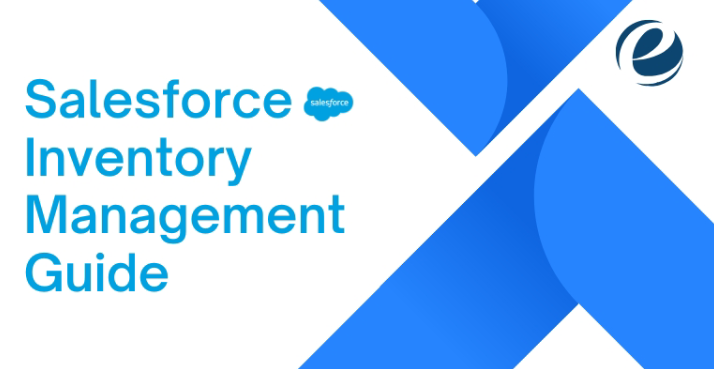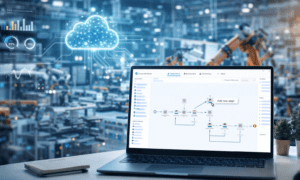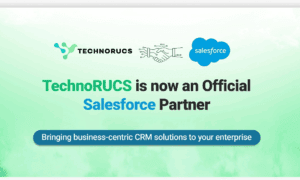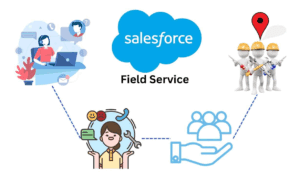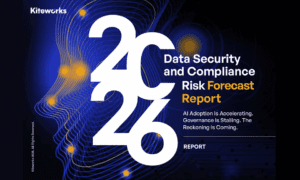Salesforce is a popular tool used by many businesses to manage customers. But did you know that you can also use ERP on Salesforce to handle things like accounting, sales, and inventory management? With the right tools, Salesforce can become a powerful ERP system. In this guide, we will explain what ERP is, how Salesforce fits in, and how you can get started. We will also look at the benefits, top features, and easy tips for setting it up.
What Is ERP and Why Is It Important?
ERP stands for Enterprise Resource Planning. It is a type of software that helps businesses manage everyday tasks. These tasks include:
Inventory and supply chain
Human resources
Sales and marketing
Customer service
Finance and accounting
Using an ERP system helps businesses run smoothly. It keeps all data in one place, so teams can work better together. It also helps with decision-making, saving time and money.
Can Salesforce Be Used as an ERP System?
Yes, Salesforce can be used as an ERP system! While Salesforce started as a Customer Relationship Management (CRM) tool, it has grown over the years. With the help of apps, customizations, and third-party tools, you can now use ERP on Salesforce to manage many business areas.
You can even run Inventory Management on Salesforce using special apps. This turns Salesforce into a full ERP platform that supports multiple business needs.
Benefits of Using Salesforce for ERP
There are many benefits to using Salesforce as your ERP . Here are some of the top ones:
All-in-One Platform
When you use Salesforce for ERP, everything is in one place. Sales, inventory, finance, and support teams can all access the same system.
Cloud-Based Access
Salesforce works in the cloud. This means your team can log in from anywhere, anytime. It’s perfect for remote work or businesses with different office locations.
Real-Time Data
Salesforce updates in real time. If someone updates inventory or sales info, everyone sees it right away. This helps teams work faster and smarter.
Customizable
Salesforce is easy to customize. You can choose only the features you need. This makes it great for small businesses and large companies too.
Strong Security
Salesforce has strong security features. Your business data is protected with top-level encryption and access control.
Top Features of ERP on Salesforce
Here are some key ERP features you can use on Salesforce:
Inventory Management on Salesforce
One of the most useful ERP tools is inventory tracking. You can manage stock levels, view product details, and track shipments all in one place. lets you know when you need to reorder, what items sell best, and how much you have in stock.
Sales and Order Management
You can manage quotes, orders, and invoices directly in Salesforce. Sales teams can check order status and talk to customers easily.
Financial Management
With ERP apps, you can manage accounting, billing, and expenses. Salesforce lets you link these to customer data for smoother operations.
Customer Relationship Management (CRM)
Since Salesforce started as a CRM, it’s great for tracking customer interactions, support tickets, and marketing campaigns.
Human Resources (HR)
You can also manage employee records, time tracking, and performance reviews using Salesforce ERP features.
Popular ERP and Inventory Software on Salesforce
You don’t have to build everything from scratch. There are many trusted tools and apps available to turn Salesforce into an ERP. Some popular options include:
Rootstock Cloud ERP : This app handles manufacturing, supply chain, and inventory management on Salesforce .
FinancialForce ERP : Great for financial planning and services.
Kenandy Cloud ERP : Built on Salesforce for manufacturing and distribution.
Ascent ERP : Strong in Inventory Software on Salesforce , warehouse tracking, and barcode scanning.
These apps are available on the Salesforce AppExchange. You can pick the ones that fit your business needs.
How to Set Up ERP on Salesforce: Easy Tips
Here are some beginner-friendly steps to help you set up your ERP system on Salesforce:
Plan Your Needs
Make a list of what your business needs. Do you need help with inventory, finance, or employee tracking? This will help you pick the right apps.
Choose the Right ERP App
Pick a trusted ERP app from AppExchange. Look at reviews and features. Choose one that works well for your industry.
Set Up Your Salesforce Account
Make sure your Salesforce account is ready. Add users, set roles, and give permissions so each person sees only what they need.
Customize Your Layout
Change the dashboard and layout to match your workflow. Salesforce makes this easy with drag-and-drop tools.
Connect Other Tools
Connect tools you already use, like QuickBooks or Google Drive. This keeps your business running smoothly without needing to switch platforms.
Train Your Team
Show your team how to use the new ERP tools. Use videos, guides, or hire a Salesforce consultant if needed.
Test and Go Live
Before going live, test everything. Check reports, orders, and stock levels. Once you’re happy, go live and enjoy your new ERP system!
Tips for Getting the Most Out of Salesforce ERP
Keep it simple at first : Start with the most important features. Add more later as your team gets used to the system.
Use reports and dashboards : Salesforce reports show trends, problems, and sales performance. Use them to make smart business choices.
Stay updated : Salesforce updates often. Check for new features that can help your business grow.
Ask for help : Don’t be afraid to ask a Salesforce consultant or join online groups for support.
Conclusion
Using ERP on Salesforce is a smart move for growing businesses. It helps manage sales, inventory, finances, and more — all in one place. With tools like Inventory Software on Salesforce, you can track products, improve workflow, and grow your business faster.
Salesforce makes it easy to get started with ERP, especially when using apps like Rootstock or FinancialForce. Just follow the setup tips in this guide, and you’ll be on your way to running a more organized, more successful business.
Whether you’re a small shop or a large company, Inventory Management on Salesforce can help you save time, reduce mistakes, and make better decisions. Now is a great time to turn your Salesforce account into a full ERP system!

